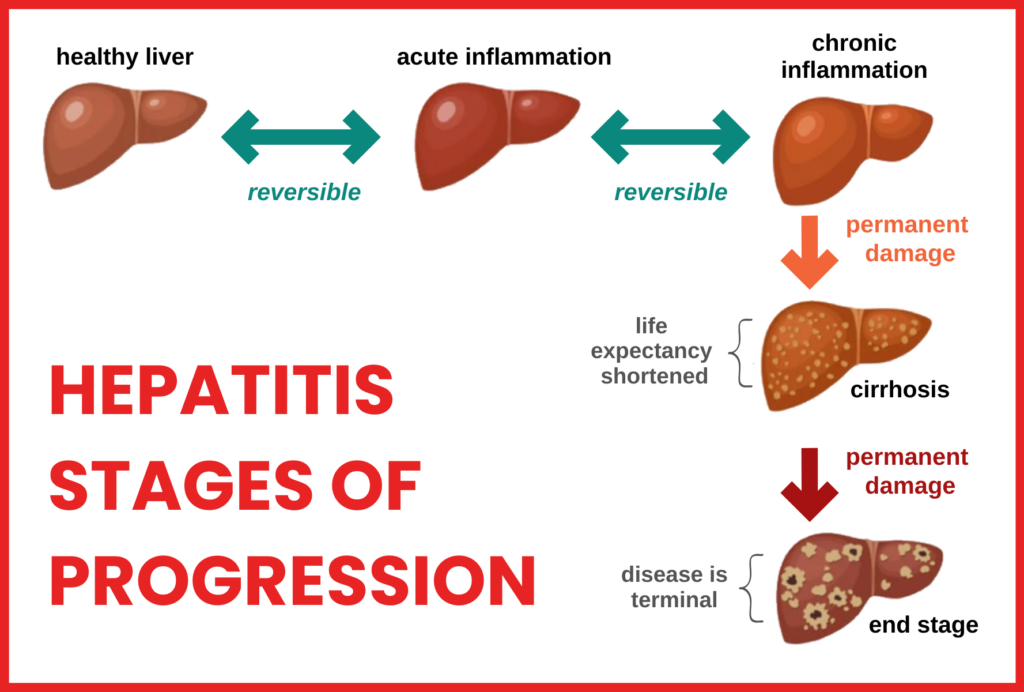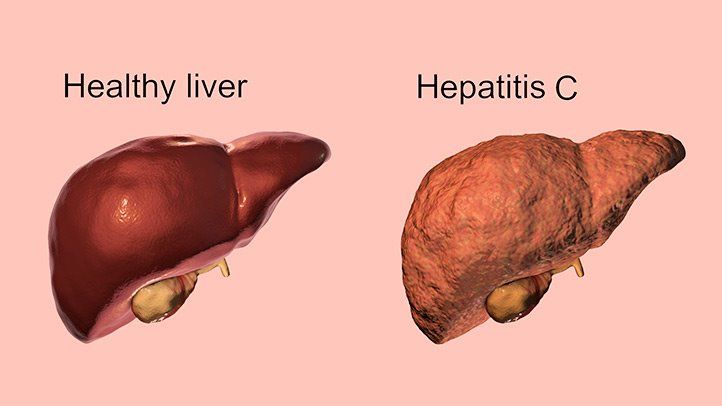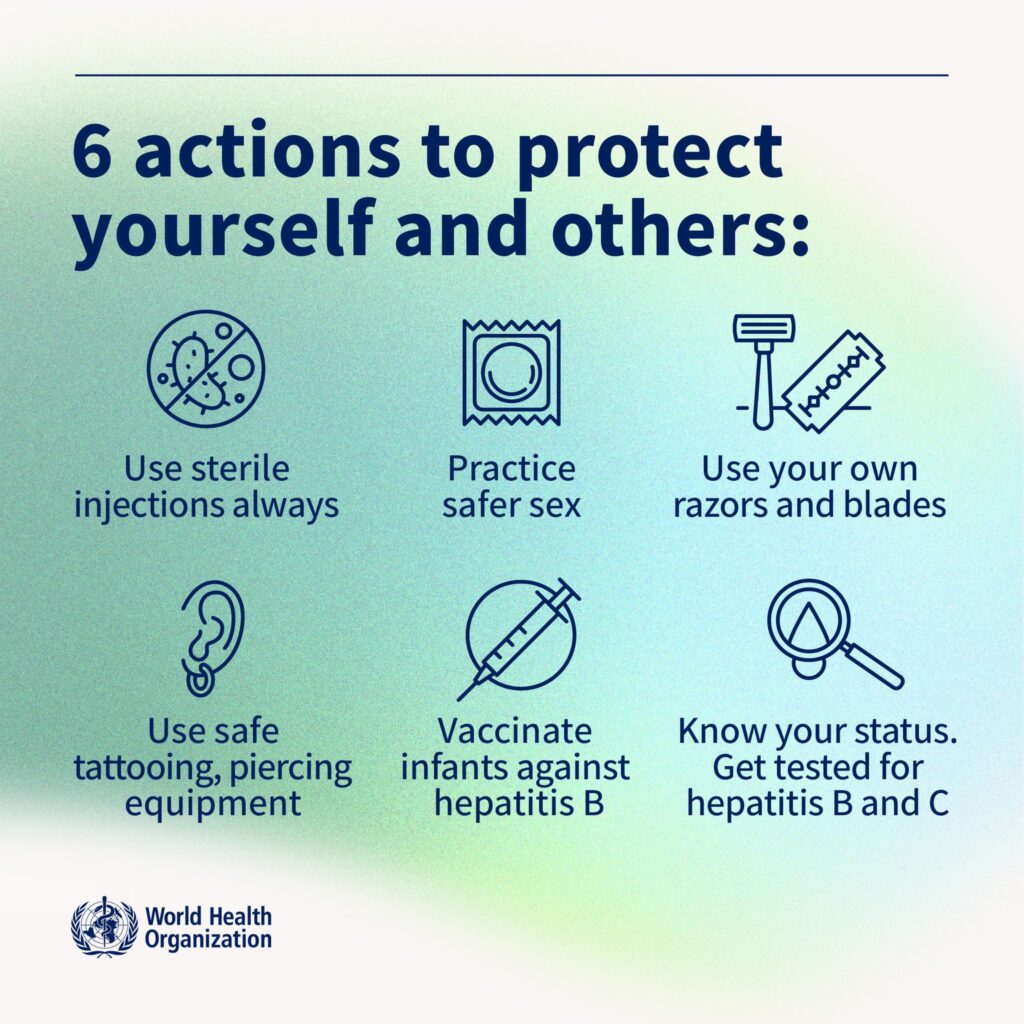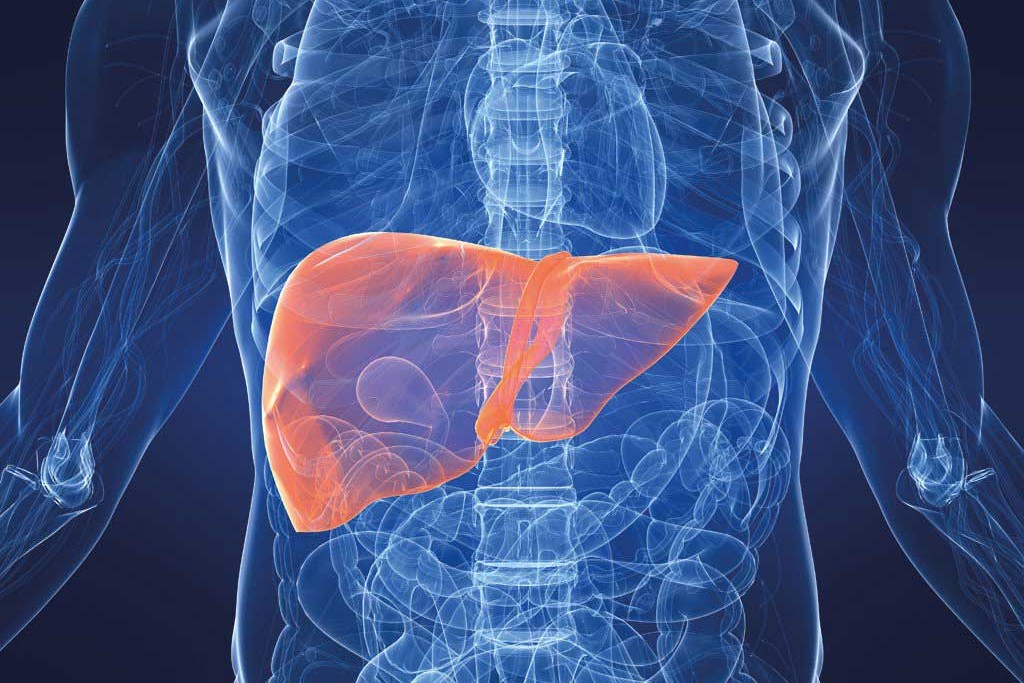An all-encompassing word for liver inflammation is hepatitis. Numerous viruses (viral hepatitis), chemicals, medications, alcohol, certain genetic abnormalities, or an overactive immune system that unintentionally targets the liver (autoimmune hepatitis) can all result in liver inflammation.
Hepatitis Types
Hepatitis A, B, C, D, and E are the five viruses that cause the various types of viral hepatitis.
Unwashed food and tainted water are the main ways that hepatitis A is transmitted through food. It is the most contagious, particularly in young children, but it also has the lowest chance of harming the liver. It is often mild and goes away entirely in six months.
Hepatitis B can be passed from mother to child as well as by contact with tainted blood, syringes, needles, or body fluids. It’s a chronic illness that, after many years of viral infection, can sometimes result in permanent liver damage, liver cancer, and cirrhosis of the liver.
Only contaminated blood can spread hepatitis C, or it can be passed from mother to child during childbirth. In the long run, it can also result in cirrhosis and liver cancer.
Only those with a concurrent hepatitis B infection can get hepatitis D.
Most cases of hepatitis E occur in South America, Asia, and Africa. When taken excessively or in very high amounts, some normally safe drugs can be harmful to the liver and result in hepatitis, also known as drug-induced hepatitis. These include vitamin A and acetaminophen (Tylenol).

Signs and symptoms
- Malaise
- soreness in the abdomen, particularly in the upper right corner
- Weary
- Jaundice (skin yellowing and white area around the eyes)
- urine with a dark hue
- Stools with light colors
- stomach ache
- vomiting or feeling queasy
Diagnosis
In order to diagnose hepatitis, the following are necessary:
- Physical examination, which might or might not show an enlarged, bloated liver
- Blood tests for the presence of any of the five hepatitis-causing viruses as well as liver enzymes, which are increased in cases of liver damage or infection
- Liver ultrasound to identify any alterations
- When other tests yield conflicting results, a liver biopsy can be used to confirm inflammatory suspicions and assess the precise extent of liver damage.
- Stomach edema brought on by fluid retention

Treatment
Children and those who have never had a vaccination should get the hepatitis B and hepatitis A vaccines to avoid infection. Vaccines against types C, D, and E of hepatitis are not available. Once hepatitis is acquired, there is no recovery. The goals of treatment are to relieve symptoms, stop more liver damage from occurring, and try to reverse any already existing damage. The majority of acute hepatitis cases go away with time. Certain drugs may be used to treat autoimmune hepatitis in order to control the overactive immune system and stop more liver attacks.
There are secure and reliable vaccinations available to stop the hepatitis B virus (HBV). Additionally, this vaccine inhibits the growth of the hepatitis D virus (HDV), and when administered at birth, it significantly lowers the chance of transmission from mother to child. Antiviral medications can be used to treat a chronic case of hepatitis B. Treatment can lower the incidence of liver cancer, delay the advancement of cirrhosis, and increase long-term survival. Treatment for chronic hepatitis B infection will only be necessary for a subset of the population. Hepatitis E (HEV) infections can also be avoided using a vaccination, albeit it is not yet generally accessible. Hospitalization is typically not necessary for HBV and HEV, and there are no particular treatments available. Because needless drugs have a detrimental influence on liver function, it is advisable to avoid using them.
Acute and chronic infections can be brought on by hepatitis C virus (HCV). While some people heal on their own, others experience further issues like cirrhosis or cancer, or may contract a potentially fatal infection. Hepatitis C cannot be prevented by vaccination. More than 95% of hepatitis C patients can be cured with antiviral medications, lowering their chance of dying from cirrhosis and liver cancer. However, testing and treatment are still not widely available.
The hepatitis A virus (HAV) is most prevalent in low- and middle-income nations because of the difficulty in accessing dependable sources of clean water and the higher chance of consuming tainted food. Hepatitis A can be avoided with a reliable and safe vaccine. Most HAV infections are minor, and most patients fully recover and become immune to future infections. However, because of the possibility of liver failure, these infections can also seldom be severe and fatal.






Your point of view caught my eye and was very interesting. Thanks. I have a question for you.
Can you be more specific about the content of your article? After reading it, I still have some doubts. Hope you can help me.